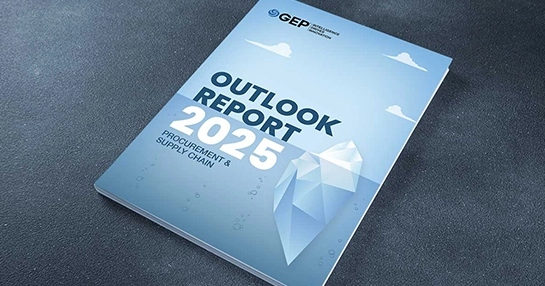
Why Procurement Needs Simulated Award Scenarios
- Award scenario simulation can model multiple award outcomes before supplier selection.
- Such simulation balances cost, risk, and compliance in one analysis.
- Award scenario simulation delivers transparent, data-backed award justifications.
November 18, 2025 | Procurement Strategy 4 minutes read
Procurement faces a growing challenge: every sourcing event involves trade-offs. The lowest bidder may come with higher delivery risk. A proven supplier may cost more but ensure quality and compliance. When millions of dollars and multiple business units are involved, these decisions demand more than intuition — they need proof. That’s where award scenario simulation enters the picture. It allows sourcing professionals to test and compare different award outcomes before making a commitment.
Instead of relying on spreadsheets or subjective preferences, procurement teams can evaluate total cost of ownership, supplier reliability, lead times, and contractual commitments in one unified model.
Untangling the Cost–Risk Equation in Sourcing
Modern sourcing rarely ends with a single supplier. Multi-supplier awards have become the norm, especially for critical categories like logistics, IT hardware, and raw materials. Yet each award configuration triggers cascading effects — on logistics costs, risk exposure, and supply continuity.
Research shows that more than half of procurement leaders struggle to balance cost and risk in supplier award decisions. The problem isn’t just data overload. It’s the absence of a structured way to model how one decision affects another. Without that visibility, sourcing teams often choose suboptimal combinations — overweighing short-term price reductions and underestimating downstream risk.
Spreadsheet-based scenario modeling doesn’t really scale. Teams manually tweak bids, guess risk weightings, and produce outcomes that can’t be defended when challenged by finance or audit. Simulation offers a way out: data-driven, transparent, and repeatable.
Is your sourcing team getting the desired results from auctions?
Drive greater savings with GEP SMART’s intuitive AI-powered sourcing tools
Where Current AI Tools Fall Short
Generative AI has changed how sourcing teams gather insights, but it doesn’t yet replace the analytical depth needed for complex award modeling. Most AI tools can summarize supplier profiles or flag risk events, but they can’t weigh multiple award variables simultaneously or optimize across conflicting constraints. Further, the AI may also recommend the cheapest supplier, unaware that a customs delay or ESG violation could erase savings. Data fragmentation across functions still limits AI accuracy.
Most systems aren’t connected end-to-end, so the AI can’t simulate scenarios using full supplier histories, risk data, and operational inputs. This limitation makes AI good at “answering questions,” but not yet capable of reasoning through trade-offs. That’s the real shortfall — and where simulation engines integrated into procurement platforms change the game.
How Award Scenario Simulation Works
Award scenario simulation runs multiple “what-if” models across quantitative and qualitative factors. Each simulation tests different award allocations — for instance, 70% of volume to Supplier A and 30% to Supplier B — and evaluates how that configuration performs under different risk or demand conditions.
The simulation layers can include cost models, sustainability metrics, contractual constraints, and so on. By quantifying each variable, the system can display the trade-offs in real terms — not as abstract risk scores but as concrete impacts on cost, lead time, and compliance. Procurement leaders can then visualize how one decision affects another. For instance, shifting 10% of the volume to a secondary supplier might raise costs by 1.5% but cut risk exposure by 40%. This transforms the award process from negotiation guesswork into strategic modeling.
Business Value Beyond Cost Savings
When procurement teams recommend a supplier mix, they can back their decision with simulated data showing how it balances cost, quality, and risk. This helps finance, supply chain, and operations teams see the rationale behind each trade-off, reducing pushback and review delays.
Key outcomes include data-driven decision-making, improved stakeholder alignment, lower risk exposure, and audit readiness. Scenario simulation also shortens review loops. Instead of running one sourcing event, presenting the result, and reopening it after objections, teams can simulate multiple alternatives in real time. That responsiveness builds credibility and trust with business units that rely on sourcing’s judgement.
Explore 101 AI Use Cases
Real-world use cases that show how AI is transforming every stage of procurement
Why Procurement Software with AI Agents Makes It Work
Advanced procurement platforms such as GEP SMART can integrate award simulation directly into the sourcing workflow. This ensures that simulations run on live data — not static exports — and include supplier risk, ESG scores, and performance histories. When paired with agentic AI, simulation becomes even more powerful. Agents can generate multiple award models automatically based on policy constraints, weigh outcomes using business-defined priorities (cost, resilience, ESG), recommend optimal awards with clear rationale and supporting data.
According to Gartner, 33% of enterprise software applications will include agentic AI by 2028 (up from less than 1% in 2024), enabling 15% of day-to-day work decisions to be made autonomously. These systems typically use of combination of reasoning, automation, and explainability — the three elements needed for simulation to become actionable. Instead of static reports, AI agents continuously can rerun simulations as new bids arrive. If a supplier’s risk rating drops or logistics costs rise, the system recalculates award outcomes and sends an alert to buyers instantly. This adaptive capability changes procurement’s posture from reactive to anticipatory. Teams no longer finalize awards and hope for stability; they monitor and adjust based on real-time signals.
The Bottom Line
Award scenario simulation redefines how sourcing decisions are made. It shifts procurement from being a price negotiator to a risk-and-value strategist. The message is simple: intuition has its place, but evidence wins trust. Award scenario simulation delivers that evidence, letting procurement leaders make decisions they can explain, defend, and stand by — even when the market shifts overnight.



